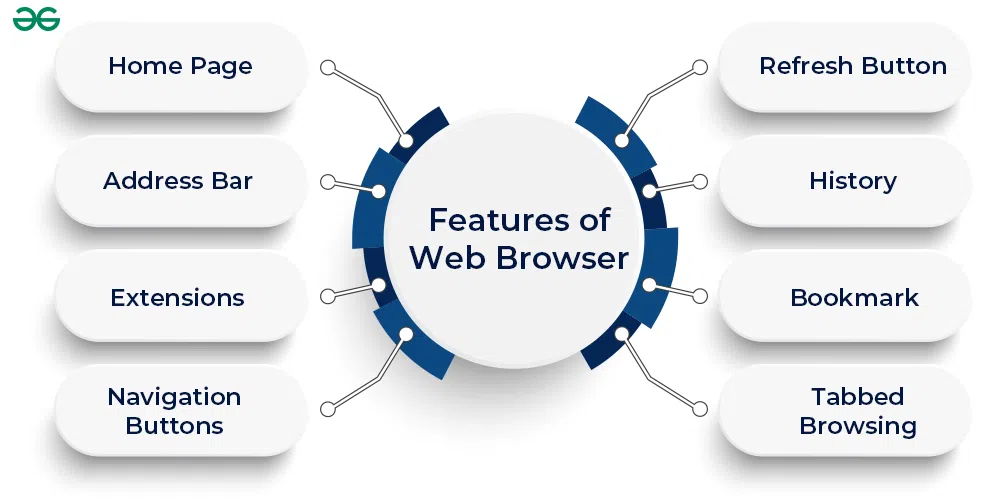In today’s digital age, web browsers serve as our gateway to the vast realm of the internet. However, this convenience comes with inherent risks, as browsing the web exposes users to various security threats such as malware, phishing attacks, and data breaches. To mitigate these risks, modern web browsers implement a plethora of security features and best practices. This article explores the key security features and practices employed by leading web browsers to ensure a safer browsing experience for users.
1. HTTPS Encryption
One of the fundamental security measures adopted by modern web browsers is the implementation of HTTPS encryption. Hypertext Transfer Protocol Secure (HTTPS) encrypts the data exchanged between the web browser and the website, safeguarding it from interception or tampering by malicious entities. Browsers display a padlock icon in the address bar to indicate a secure HTTPS connection, providing users with assurance when transmitting sensitive information such as login credentials or financial details.
2. Sandboxing
Sandboxing is a crucial security mechanism utilized by web browsers to confine potentially malicious code within a restricted environment, known as a sandbox. By isolating web page components such as JavaScript, plugins, and iframes, browsers prevent them from accessing sensitive system resources or executing harmful actions outside the sandbox. This containment strategy helps mitigate the impact of malware infections and prevents attackers from exploiting vulnerabilities to compromise the user’s device.
3. Phishing and Malware Protection
To combat phishing attempts and thwart malware distribution, modern web browsers employ built-in security features that analyze website reputation, detect suspicious URLs, and block malicious content. Through real-time scanning and heuristic analysis, browsers can identify phishing pages designed to deceive users into divulging personal information or installing malware. Additionally, browser-based malware protection mechanisms offer proactive defense against malicious downloads by verifying the safety of files before they are executed or saved onto the user’s device.
4. Automatic Updates
Regular software updates are essential for addressing security vulnerabilities and patching known exploits. Modern web browsers streamline this process by incorporating automatic update mechanisms that ensure users receive the latest security patches and feature enhancements without manual intervention. By staying up-to-date with the latest browser version, users benefit from improved security measures and bug fixes, reducing the risk of exploitation by cyber threats.
5. Enhanced Privacy Controls
Privacy concerns have become increasingly prevalent in the digital landscape, prompting web browsers to enhance their privacy controls and empower users with greater transparency and control over their online activities. Features such as tracking prevention, cookie management, and private browsing modes enable users to limit the collection of personal data by websites and third-party trackers, thereby preserving their anonymity and protecting their privacy rights.
6. Content Security Policy (CSP)
Content Security Policy (CSP) is a security standard implemented by web browsers to mitigate the risks associated with cross-site scripting (XSS) attacks. CSP allows website owners to define a set of rules specifying the trusted sources from which web resources can be loaded, including scripts, stylesheets, and plugins. By enforcing these restrictions, browsers can prevent malicious scripts from executing within the context of a web page, thereby reducing the likelihood of XSS vulnerabilities being exploited to compromise user data or hijack sessions.
7. Web Authentication
Web Authentication, also known as WebAuthn, is an emerging standard supported by modern web browsers to enhance authentication security and mitigate the risks associated with password-based authentication. By enabling users to authenticate using biometric factors such as fingerprint or facial recognition, as well as hardware-based security keys, WebAuthn reduces reliance on passwords and strengthens protection against credential theft and phishing attacks.
Conclusion
In conclusion, modern web browsers incorporate a diverse array of security features and best practices to mitigate the ever-evolving threats posed by malicious actors on the internet. From encryption protocols and sandboxing mechanisms to phishing protection and automatic updates, browsers continuously innovate to ensure a safer and more secure browsing experience for users. By staying vigilant and leveraging the robust security measures provided by leading web browsers, users can navigate the digital landscape with confidence, knowing that their online interactions are protected against cyber threats.
